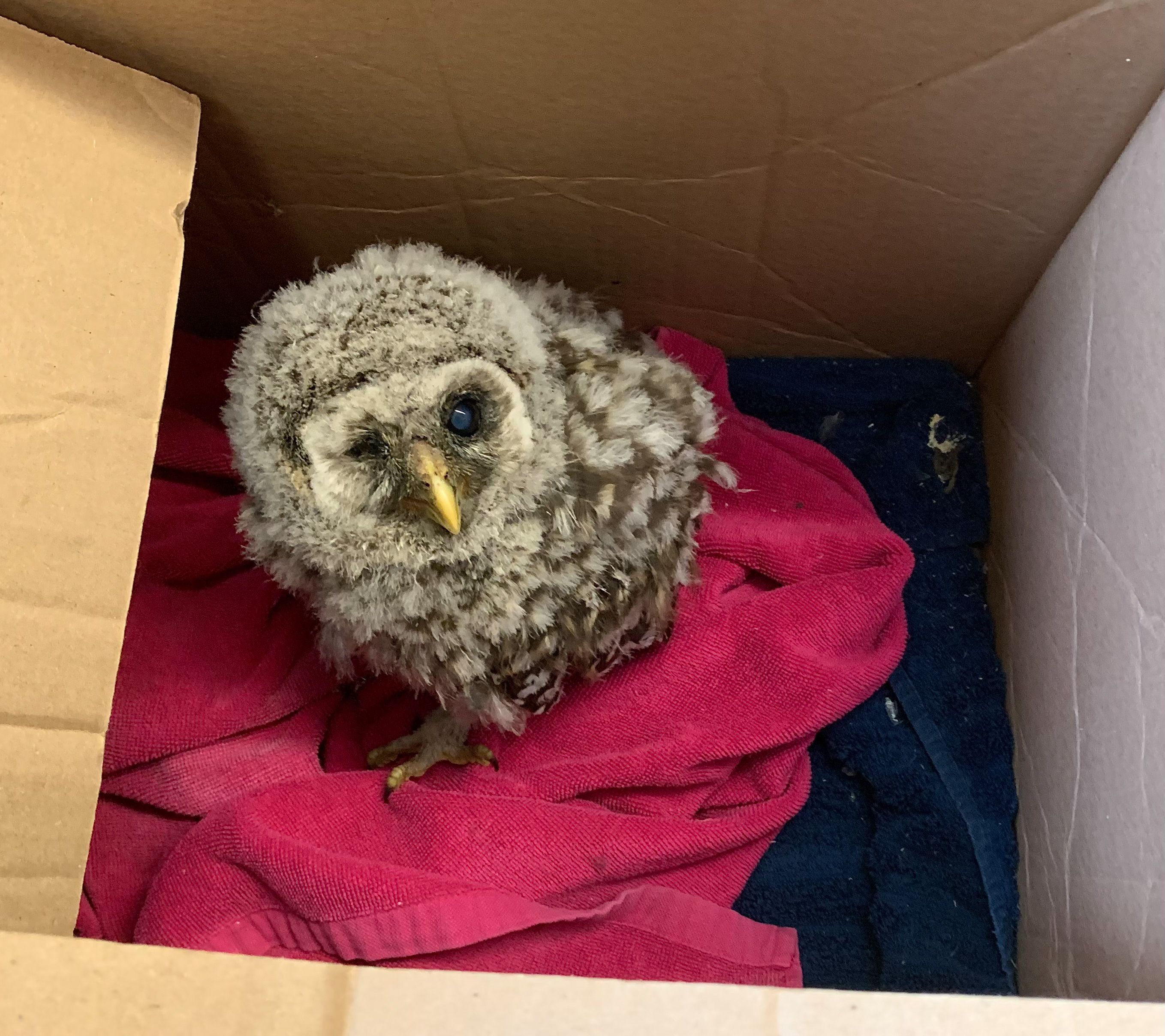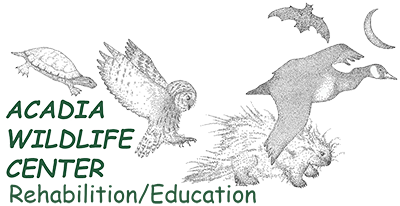So you have found an injured animal?
How do you tell if an animal needs help?
Which animals should be left alone & which need assistance?
ALWAYS REMEMBER THAT YOUR SAFETY COMES FIRST
So you have found an injured animal?
Welcome to Acadia Wildlife Center. Our facility is a non-profit wildlife rehabilitation clinic for injured native wildlife. If you have found what you believe is an animal in need, please call us (207) 288-4960 before doing anything, so we can discuss circumstances; safe capture and transport; and if the animal actually needs our help. If you get an answering machine, leave us a message and listen to the instructions carefully. Please be patient, we will call you back as soon as we can.
We care for mammals, birds, reptiles, and amphibians from mid-coast Maine, with the goal of returning healthy animals back to their homes in the wild. We offer advice in the areas of wildlife/human conflict, answering some 5000 phone calls a year and at any given time we have 100 patients in house.
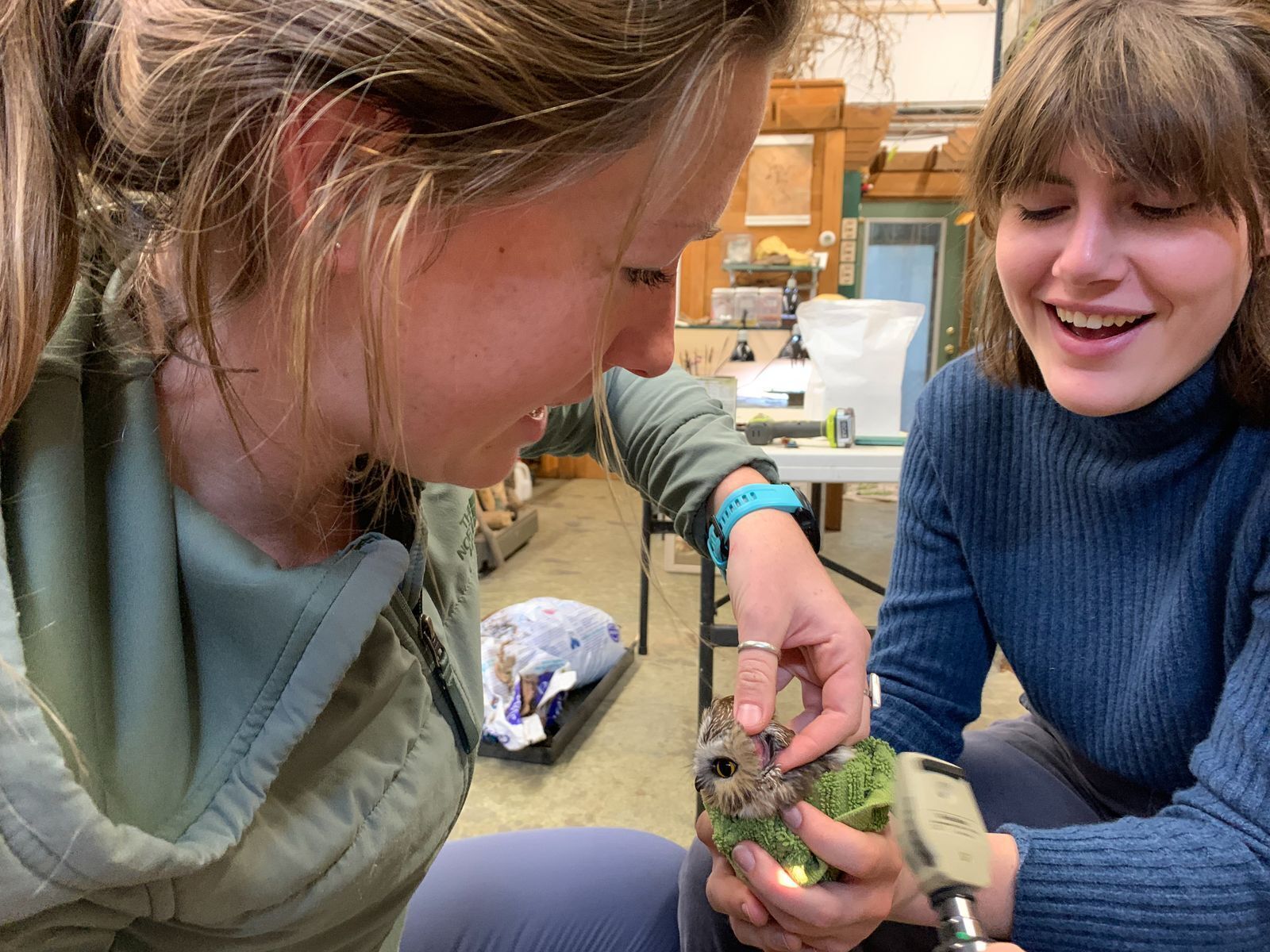
Our organization also includes a Nature Center, with native non-releasable ambassadors. We can accommodate small groups, of all ages, who are interested in environmental education and wildlife rehabilitation. Please check out our Upcoming Events to register for a program, and our Environmental Education page for information.
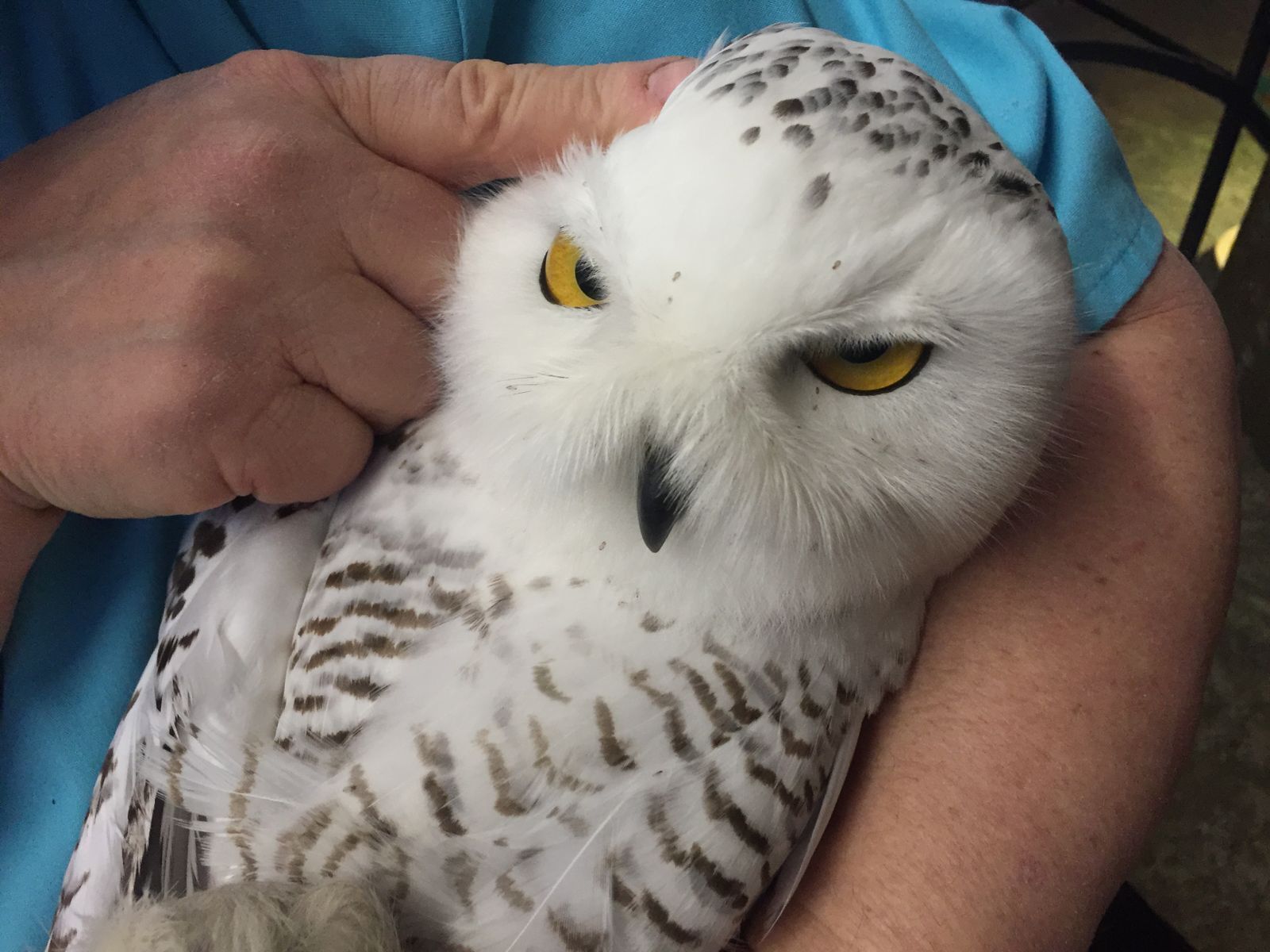
At some point in everyone’s life, we come upon an injured wild animal. Most people want to help but we don’t know what to do. Is it safe to pick it up? Is it legal to pick it up? Does it really need help? Will I get bitten? What if I just move it to the side of the road? Who do I call?
Acadia Wildlife Center is one of many licensed facilities across the state and around the world where help for injured wildlife can be found. If you are not in mid-coast Maine you can locate other facilities by going to Maine Department of Inland Fisheries & Wildlife or Animal Help Now. Most rehabilitators know others that would be close to your location and can recommend one.
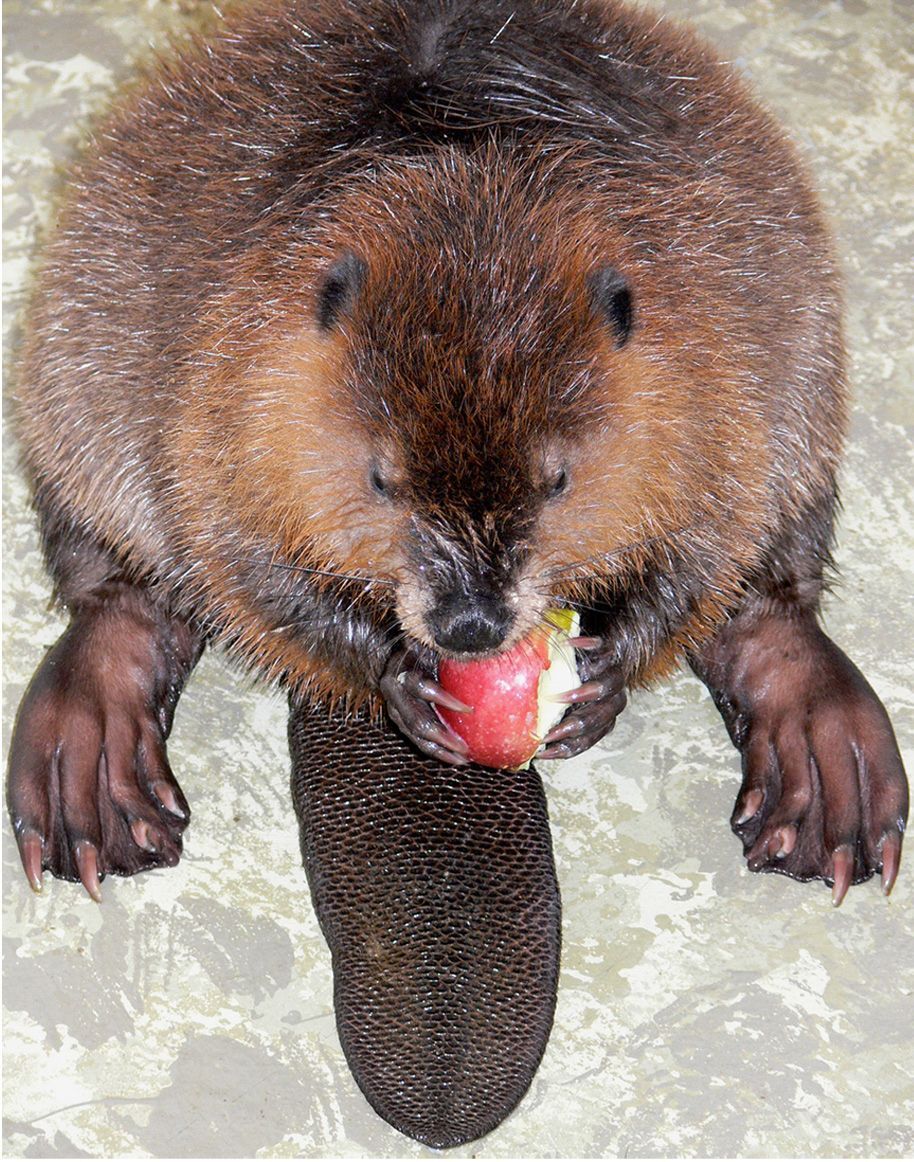
How do you tell if an animal needs help?
If you see one of the following you need to call a wildlife rehabilitator.
- animal is hit in the road
- animal is bleeding
- bird has hit window and is not recovering
- animal has an obvious broken wing or leg
- animal is lying out in the open
- animal is in a cat’s mouth
- bird not flying away when approached/ mammal is unable to move away from you when approached
- animal stuck to glue trap, caught in plastic etc.
- animals stuck in a trash bin, window well, or storm grate
- baby looks too young to be alone and is in the open
- baby crying incessantly, or climbing up your leg
- nest of birds has fallen
- animal is being held by a child or neighbor who thinks it might make a good pet
Each animal has a different natural history. Do not presume that a baby alone is in trouble as many species leave their young alone for long periods for their own safety. Do not presume that a normally nocturnal animal out in the daytime is in trouble. Ideally you would talk to a rehabilitator before handling an animal and make decisions together about what the animal needs.
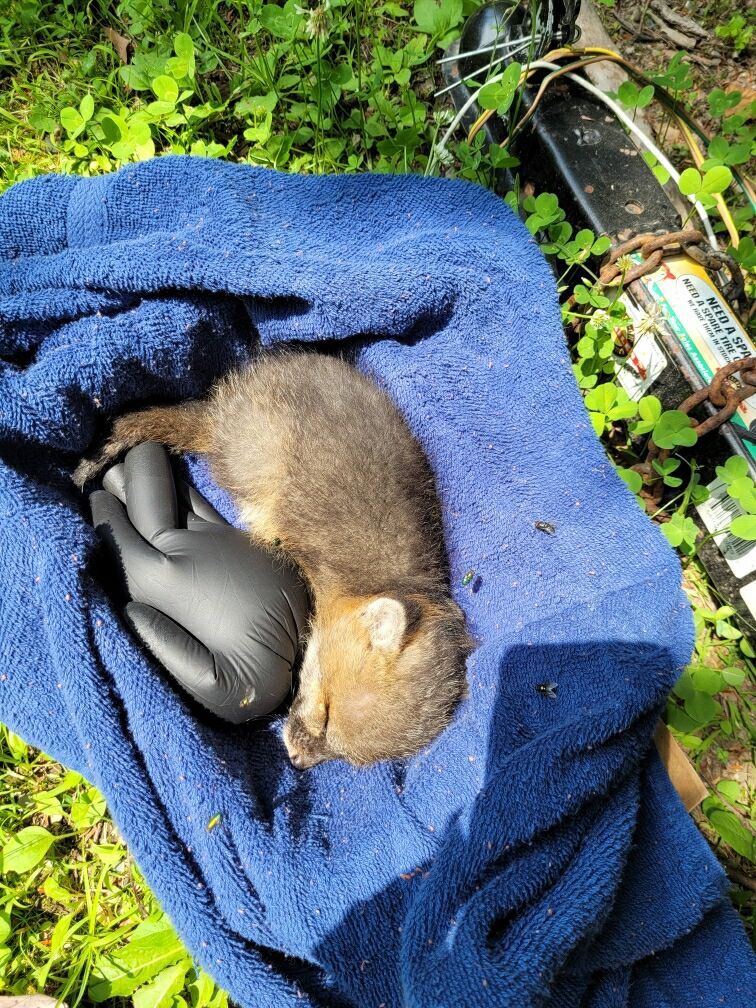
If you must intervene before talking to a rehabilitator, always use gloves or a thick towel to prevent being injured by a frightened and wounded animal. Remember that most mammals, even young ones can carry rabies which is fatal, gloves will help to protect you. Find a cardboard box, punch small air holes in it, add a towel at the bottom. Put the animal in the cardboard box and close the lid tightly. In the case of very small animals, tape the lid shut. Never give food, formula, or water. Heat can help any injured animal, quiet is essential.
Which animals should be left alone & which need assistance?
Mammals
Most mammals are raised by their mothers, making it her sole job to keep the baby safe, and find enough food for herself and her young. Her babies are very vulnerable during this time, to disturbance from humans, and attacks from predators. Many baby animals instinctively remain quietly where their mother has left them, their lack of movement being their only protection.

Fawns and rabbits are prime examples of baby animals who lie very still for safety and should never be touched or moved. You may never see a mother, but the satisfied behavior of the baby is proof of her care. If a fawn at a young age is on its feet and crying, put all pets indoors, and consult with a rehabilitator. If a rabbit nest has been disturbed, remake it in exactly the spot where it was found, place the babies inside, and lay a single piece of grass across the opening to check if the mother has come back during the night. By the time a young rabbit is the size of a woman’s fist, they are out of the nest, and it is normal for them to be in your backyard, and normal for them to freeze in shock when they see you. Again, put all pets inside, postpone mowing for another time, and leave the baby alone.

These prey species often use the proximity of humans or roads to leave their young, as it is safer than exposing them to predators. It is not unusual to see fawns curled up in your flower beds, next to a busy road, in an open greenhouse, or on a front porch. If there is an immediate problem, such as a fawn lying in a parking lot, call a rehabilitator for advice. If a fawn is crossing a road, let it pass as the mother is probably just out of sight waiting for it.
Other baby mammals should be in a nest, tucked away from humans with full tummies.
If a baby mammal is alone, in the open, and cold, it needs help. It may be able to be reunited with its mother, but advice will be necessary as each species is different. Wear gloves, and put the baby in a box, with a warm, soft cloth, some sort of external heat source, and put the box in a warm room away from noise and pets. Give no food, formula, or water. Do not allow children or adults to handle the baby as animals can carry diseases, as can humans, and can die from the stress of being treated as a pet. Call a rehabilitator.
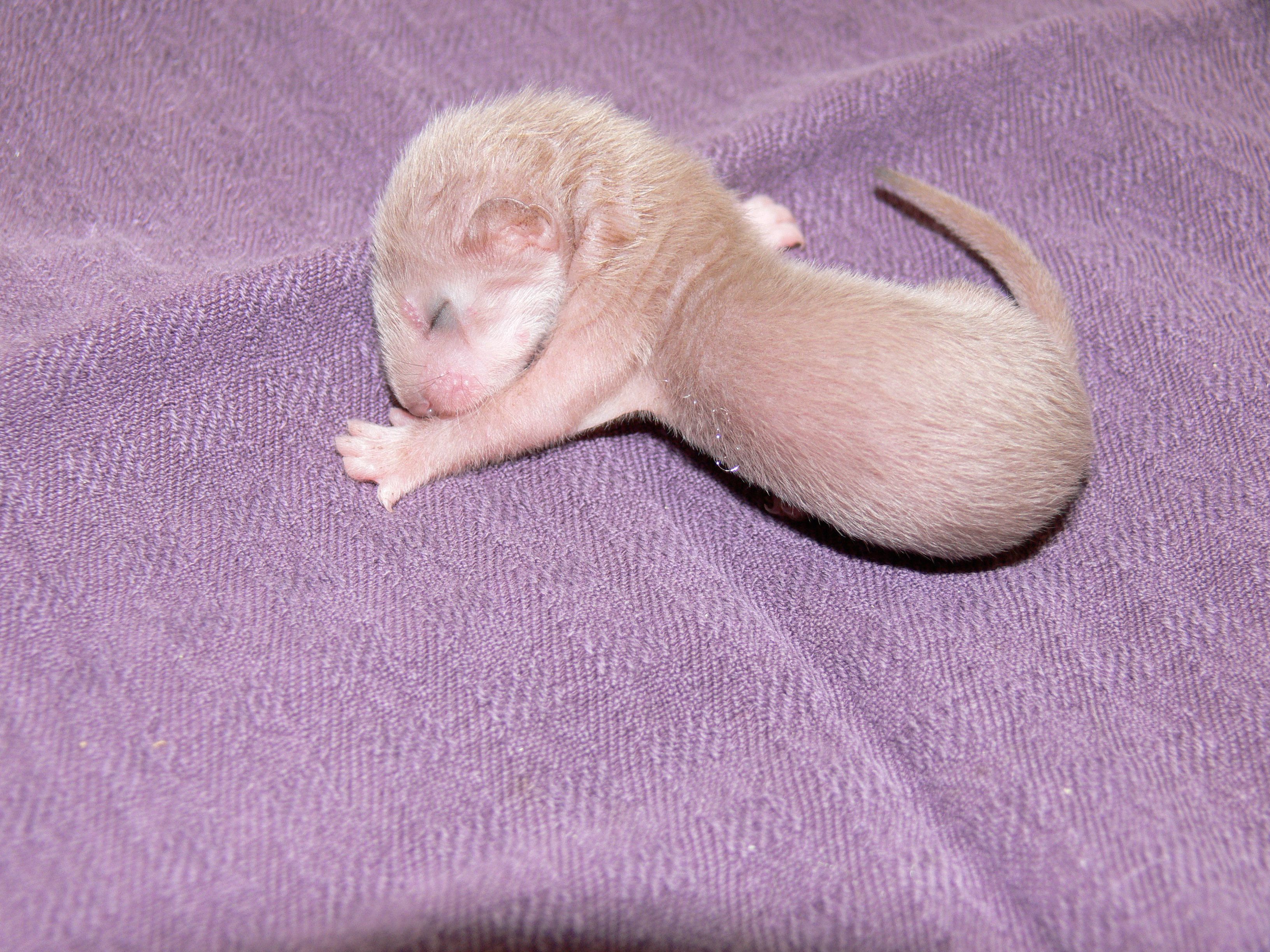
Bats
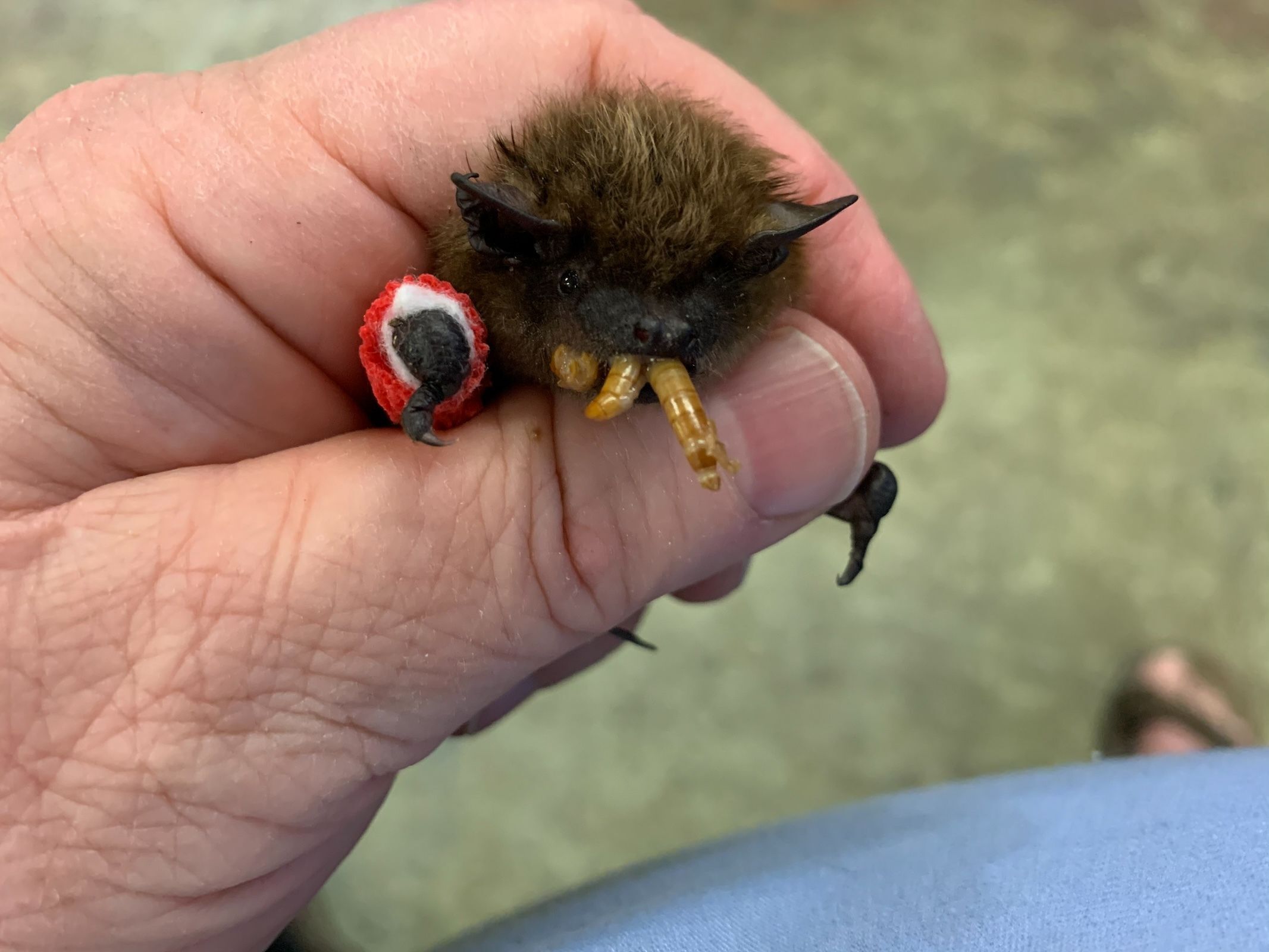
Acadia Wildlife Center specializes in the care of bats. We receive bat patients from all over Maine, including very young babies. We advise many homeowners on bat related situations. Bats are a rabies vector species so always wear gloves when handling them including the babies. Children should never pick up a bat but can put a box over an injured one to hold it in place while they get an adult for help. Pictures on this page and elsewhere may show hands without gloves, but these are handlers who have their pre-exposure rabies shots, get their titers checked frequently and can handle the animals without getting bitten. Bats are very small, and it is easier for rehabilitators to handle them without gloves.
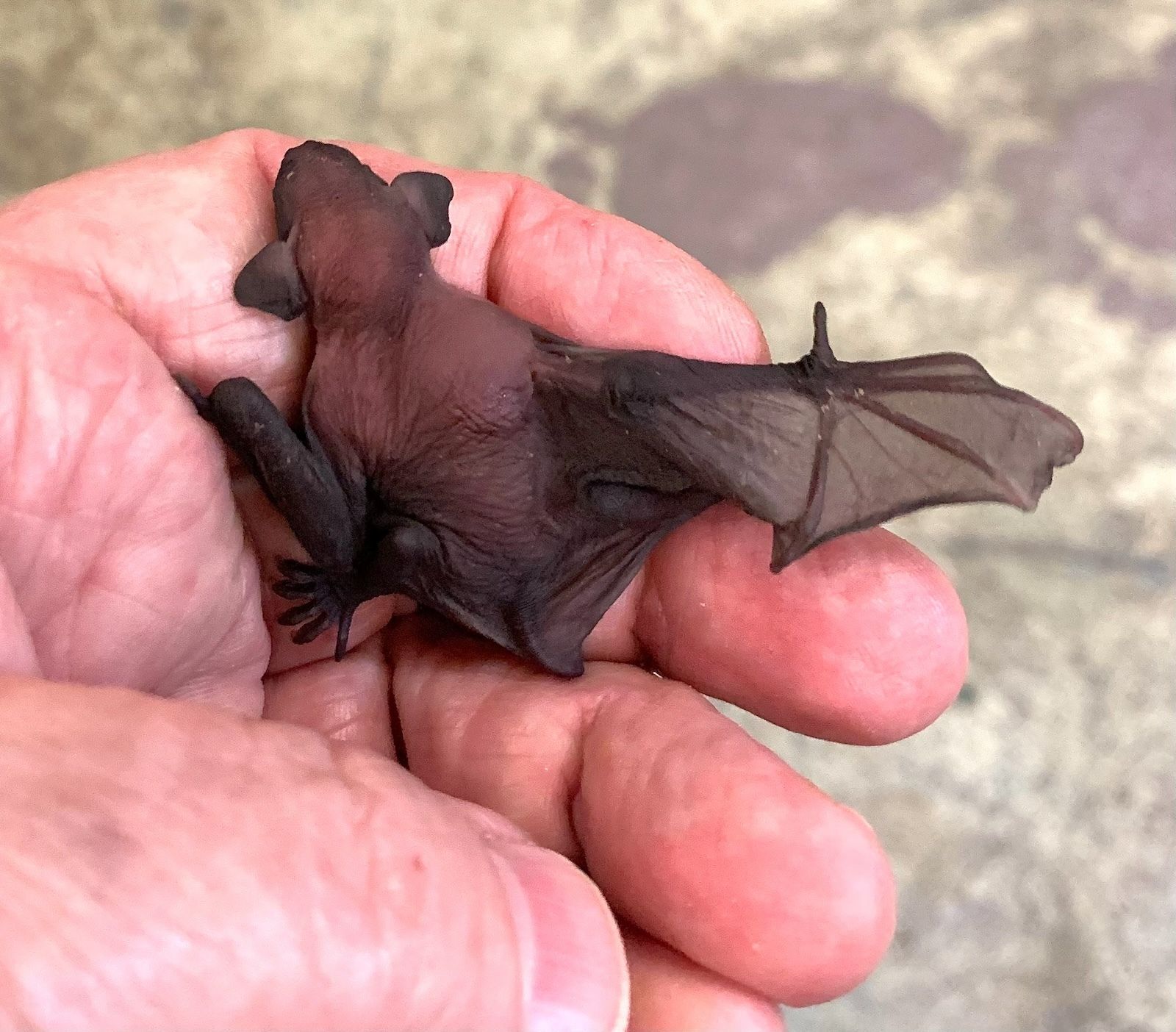
AWC receives bats year-round. In spring bats of several species are waking up from hibernation, or arriving from migration, and get injured by cats, door hinges, glue traps, and other human related incidents. Bats rarely hurt humans, but humans hurt bats on a daily basis.
By June, female bats have their young. The tiny babies cling to their mothers nursing as the mothers are hunting or sleeping. Sometimes they lose their grip and fall. Later infants become too heavy for the mothers to carry and are left at the colony roost. They often fall from their nursery and need help. At all stages of infancy, they are fragile and peep loudly for their mothers. If she does not find them quickly, they get cold and hypothermic and need speedy transport to our facility. Any bat on the ground, adult or baby, needs to come into our clinic.

Later in August juveniles fly for the first time and again some of them fall, sustain injury, or become dehydrated. They can safely be put back near the nursery entrance, but only if they appear very lively. If an adult wanders into your house and is flying, do not attempt to catch it, but open windows at night and they will fly out. If they are still and sleeping in the daytime they can be carefully picked up with gloves and moved to a vertical surface outside. Bats cannot fly up from the ground. If the next morning they have not moved, they need to come in here.

In winter Big Brown Bats hibernate in our attics and barns. Other species travel to caves or talus slopes to hibernate or migrate south depending on the species. If wintering bats are woken from hibernation by construction or other disruption and fly around your house, they do not have the fat reserves to return to hibernation and will not survive until spring. Therefore, we recommend that any adult bat flying in your house in winter be captured safely and brought to our clinic. Here we keep them awake, feed them, and release in the spring. Bats like your attics and barns. They are safe places for them to have their young and hibernate. But they don’t like your kitchens or bathrooms and end up there by mistake. A calking gun can be your best friend in an old house, closing tiny cracks around walls and chimneys.
Bats should be transported to us in a small tight-fitting box with very tiny airholes. In the box should be a soft cloth folded or scrunched up so the bat can crawl into the middle of it. Warmth is very important especially with babies, so a soda bottle of warm water wrapped in a sock and pushed away from the animal, so it doesn’t roll on them, or a hand warmer wrapped up is called for. The box should then be taped shut, no food or water, no handling, and in a warm part of your house until transport. If you or your child handles the bat bare handed, it must be put down and sent to the rabies lab for testing for rabies. Rabies is very rare, one in ten thousand, but we have had them here and it needs to be taken seriously.
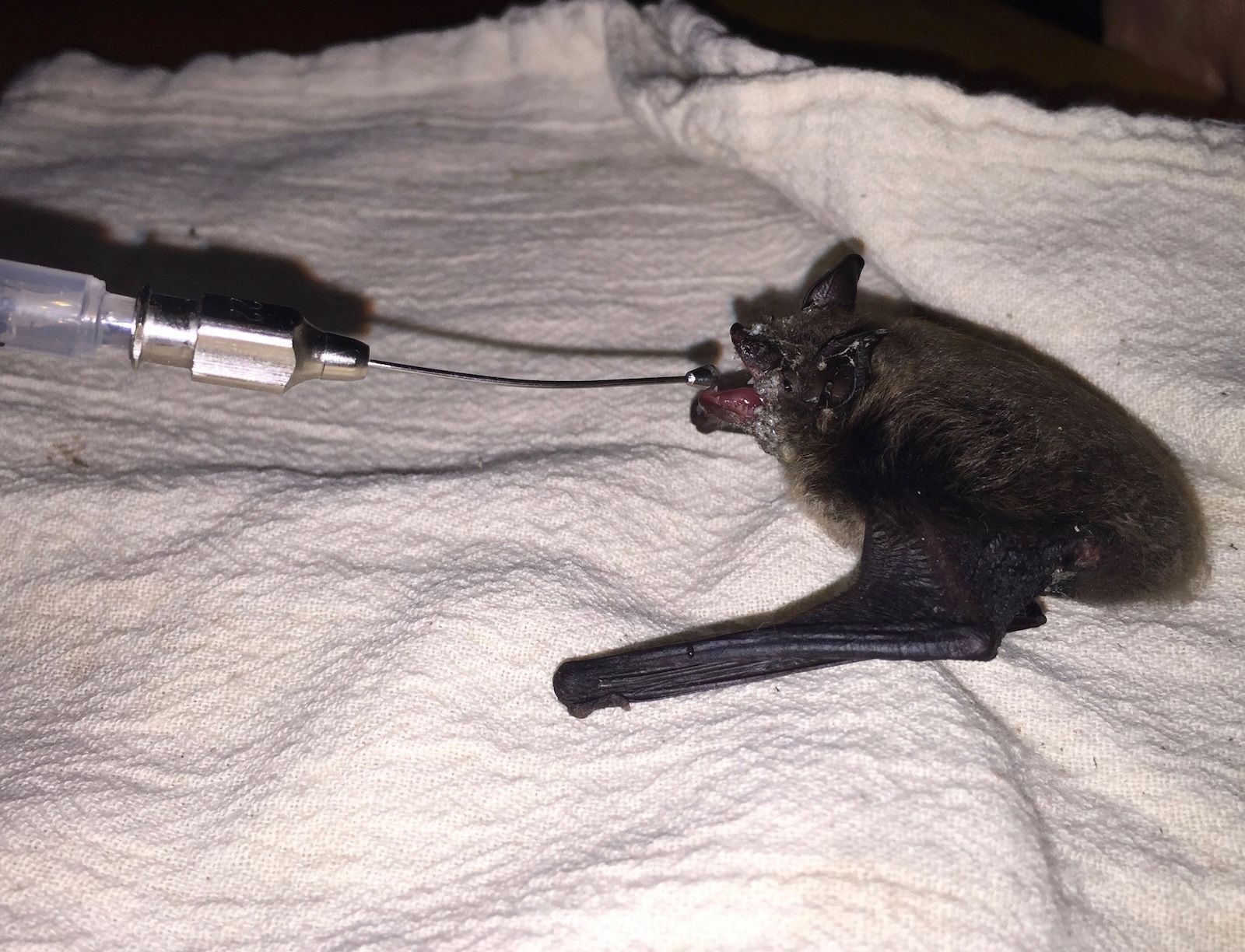
Many people ask “why should we care about bats?” “I’m afraid of bats”. “They are ugly like flying mice.” Bats have nothing they need to prove to any of us, living out their long lives quietly and gently, not bothering anyone. I find them endlessly fascinating and beautiful. More closely related to primates than rodents, they can do everything I can do, and so many things I can’t. But for those who don’t yet love them there is probably no group of mammals more useful to humans on the planet.

The insectivorous bats can eat 1000 bugs an hour. The small bats eat mosquitoes and other small insects that carry human diseases and make backyard barbeques so annoying. Big Brown Bats eat thousands of beetles that attack our agricultural crops and devastate our forests. In North America alone they save us billions of dollars in crop and forest damage.
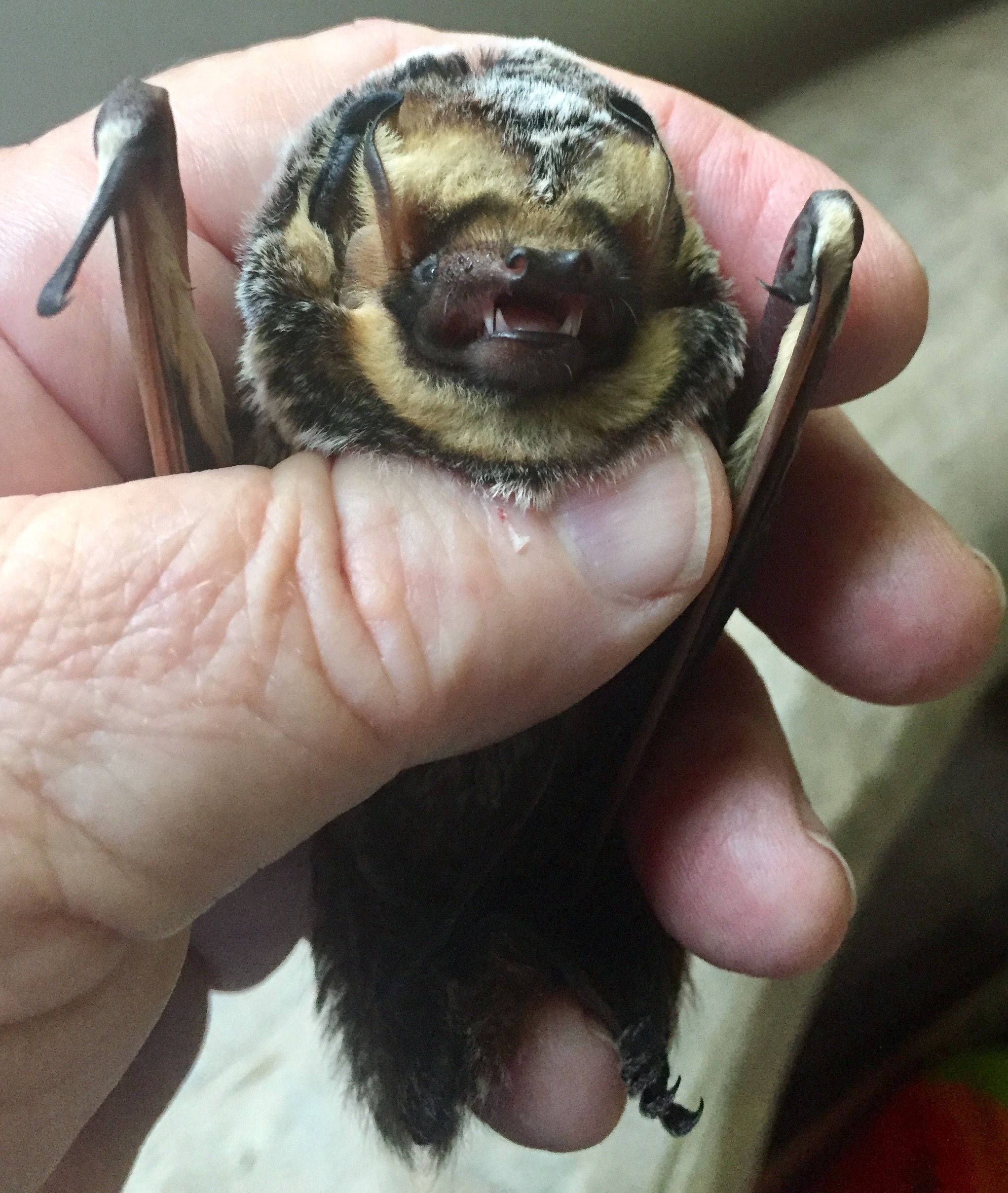
The bats of the southern climates are often nectar or fruit eating species. These wonderful animals pollinate hundreds of species of fruits and trees and disperse rainforest seeds that ensure the most vital biome in the world. Often, they are the sole pollinator or disperser. There is barely a product that we use every day that does not owe its existence to fruit eating bat species. Bats make up a quarter of all the mammal species on earth, and most of them are in trouble.

In the last year three of our eight species of local bats (Little Brown, Long-eared, and Small- Footed) have been put on the endangered and threatened list. The Little Brown Bat population has plummeted 99%, the Big Browns are down 40%. A European cave fungus transported to a cave in New York State, called the White-nosed Fungus is killing our bats. It has spread from that one cave to the entire eastern seaboard of the U.S. and Canada and jumped to the west coast. In a decade we have lost most of our bats. For their size they are among the slowest reproducing mammals on earth having only one or two pups a year. Most species of bats may go extinct, right under our noses.
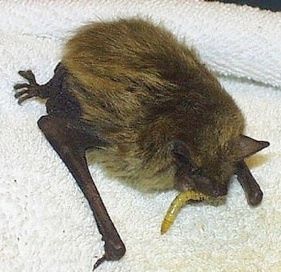
Humans usually do not like or support bats. This is surprising considering how important they are to us, and it needs to change. The scientists will have to come up with the specifics of a cure. The publics’ job is to support the efforts of the scientists (large research orientated bat organizations like Bat World Sanctuary, Lubee Bat Conservancy, and Bat Conservation International) and the bat rehabilitators. Acadia Wildlife Center will take any and all bat patients. Two years ago, we built, with the public’s support, the first bat flyway in Maine. We depend on the public to bring us those patients. Any problems that you as a homeowner have with bats can be discussed, and solutions found without hurting these animals. Please call us.

Birds
The third group of animals that may or may not need your help are baby birds. This is a large and complicated group and many baby birds are “birdnapped” by well-meaning people. Again, the most effective strategy is to talk to a rehabilitator before you invertedly take a baby away from its family. Wild animals are extremely attached to their young and the baby’s best chance at a normal life (unless injured) is with their parents.
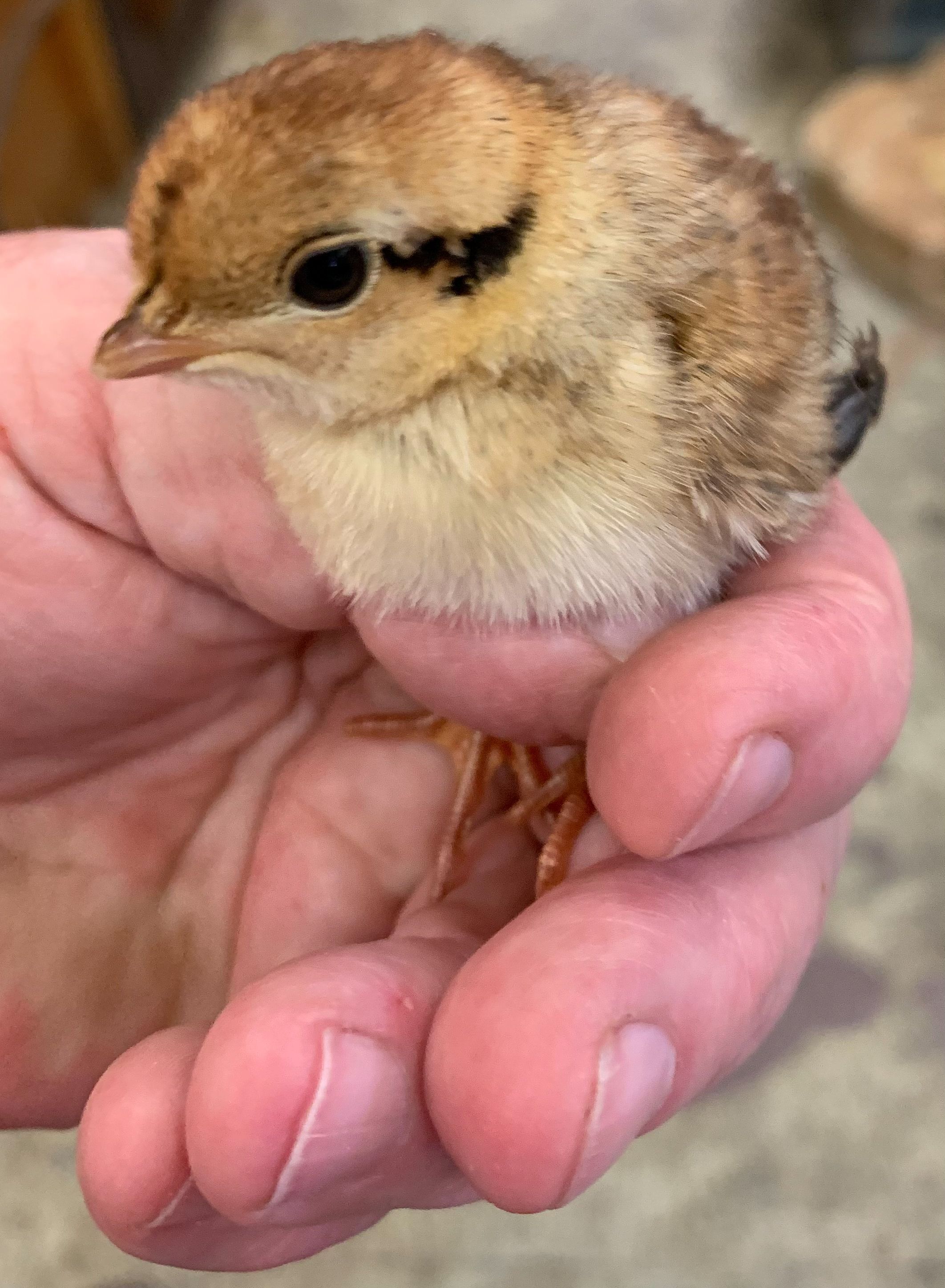
Birds are hatched in one of two group types, precocial and altricial. Precocial birds are covered with fuzz and walk away with their mother from the nest almost immediately. With a little help, they can feed themselves completely within a few days. This group includes ducks, shorebirds, and gamebirds. If you find one alone it is in trouble and you must transfer these to rehabilitators immediately where professionals know the natural history of the species, foods, and the best way to reunite the baby with its family depending on species it is.
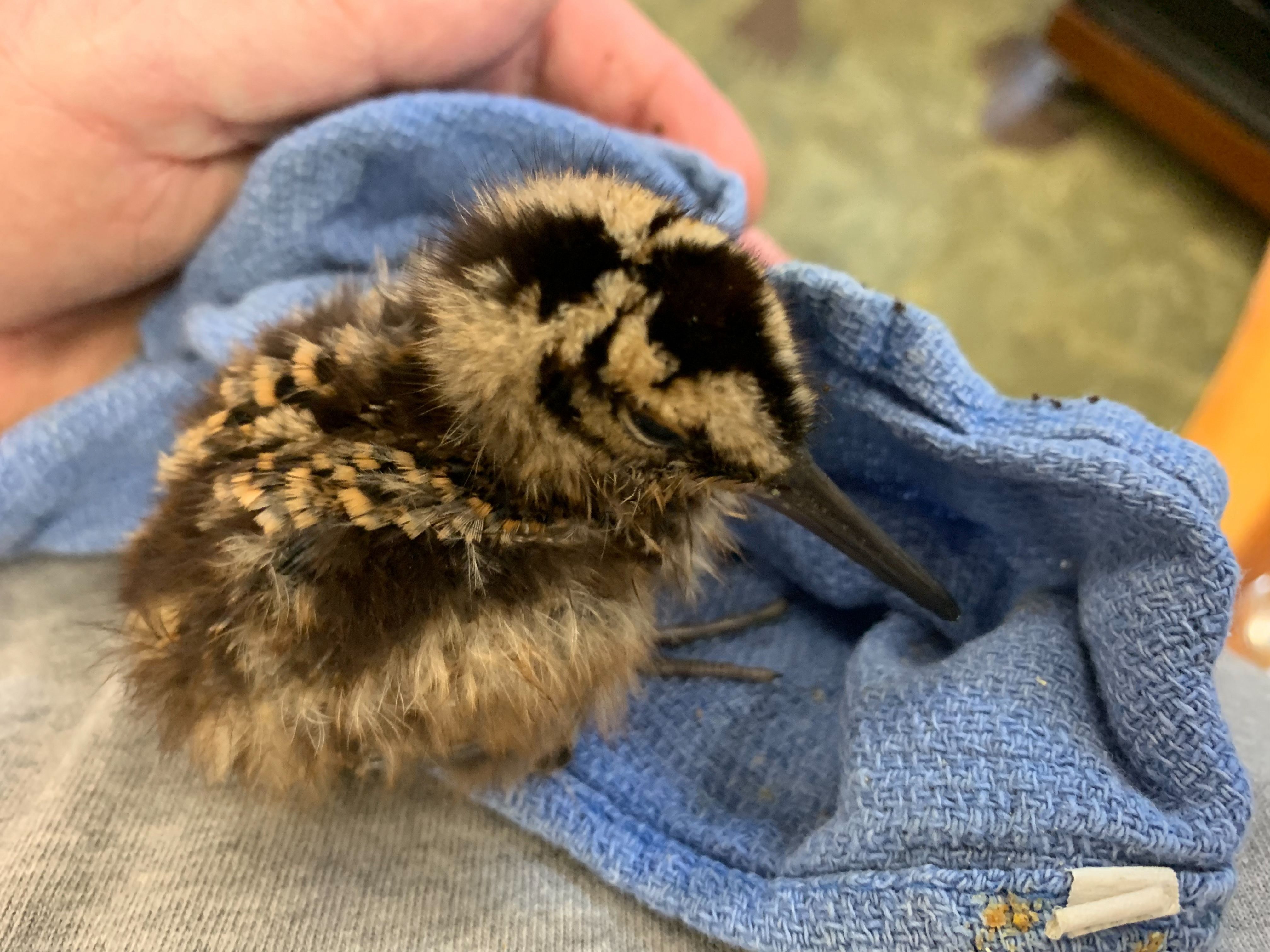
Altricial birds range from Hummingbirds to Eagles. They are hatched in some sort of nest, sometimes on the ground. They are naked with a bit of fuzz, eyes closed, and unable to move or lift their heads at first.

The parents must keep them warm and provide constant food in the daylight hours, which means that both parents are often involved. They remain in the nest while their feathers change from fuzz to spine -like feather shafts, to feathers like adults. The only exception to this progression are owls. While still fuzzy and unable to fly they leave their nest and sit on a branch nearby. If they fall to the ground the parents will still feed them and protect them. Unless they look sick, leave them alone. Some species fly directly from their nests like this downy woodpecker, but most flutter down to the ground where they spend the next week of so gaining muscle and feather length.
NESTLING-should be in nest.
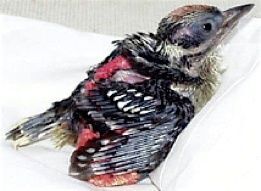
If a nestling has fallen from the nest prematurely, or the entire nest has fallen please call the wildlife rehabilitation clinic for advice. It’s possible that fallen babies have been injured and need to be examined. Until a decision has been made, keep the nestlings warm on some sort of heat source or they can become hypothermic.
FLEDGLING- should be on ground not flying well.

Once most species have a tail that is at least 1/4 inch long and short adult feathers, no matter what size the bird, they are meant to be out of the nest, like the cedar waxwing chick above or the bluebird chick below. Do not try and put them back in. They hop about, gaining strength, showing no fear, and begging almost constantly. Their parents know their voices and come to them to feed them. They should be moved out of roads, but do not move them away from the immediate area. Their parents have no sense of smell and do not care if you pick them up to move them out of danger. Put your pets inside and leave them alone.
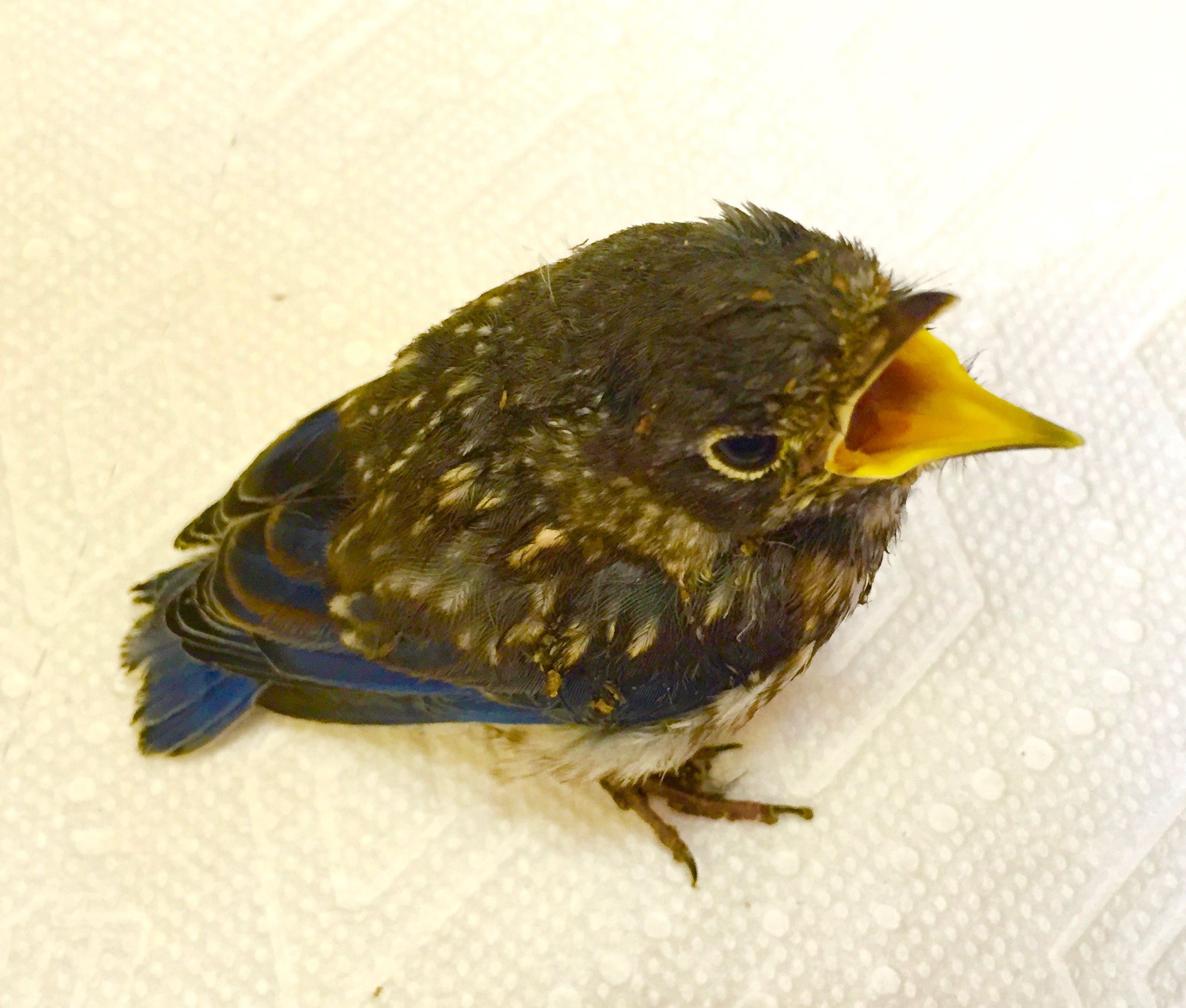
SO HOW TO TELL A HEALTHY CHICK from one that needs your help? Cats are the biggest danger. If they roam free, they will play with the baby and often leave it to die. The bacteria in a cat’s mouth is lethal and any baby that has been handled by a cat needs medical care. These babies often sit very still with their feathers all fluffed out, not begging. If you look carefully, you can tell a healthy active bird from one that is sick.

The Chickadee chick above needs help, fluffed out and eyes closed. The Great Horned Chick shown first below is ill, closed eyes, dehydrated, and immobile. The second photo of same chick has recovered well over several weeks of care, eyes wide, clicking its beak at you, ready to nail you with those feet.


If you have an outdoor cat and believe it has the right to be free, please know that almost every day in the summer we receive one or more cat-mauled babies who never have had a chance to grow up. KEEP YOUR CATS INSIDE!!
Reptiles and Amphibians
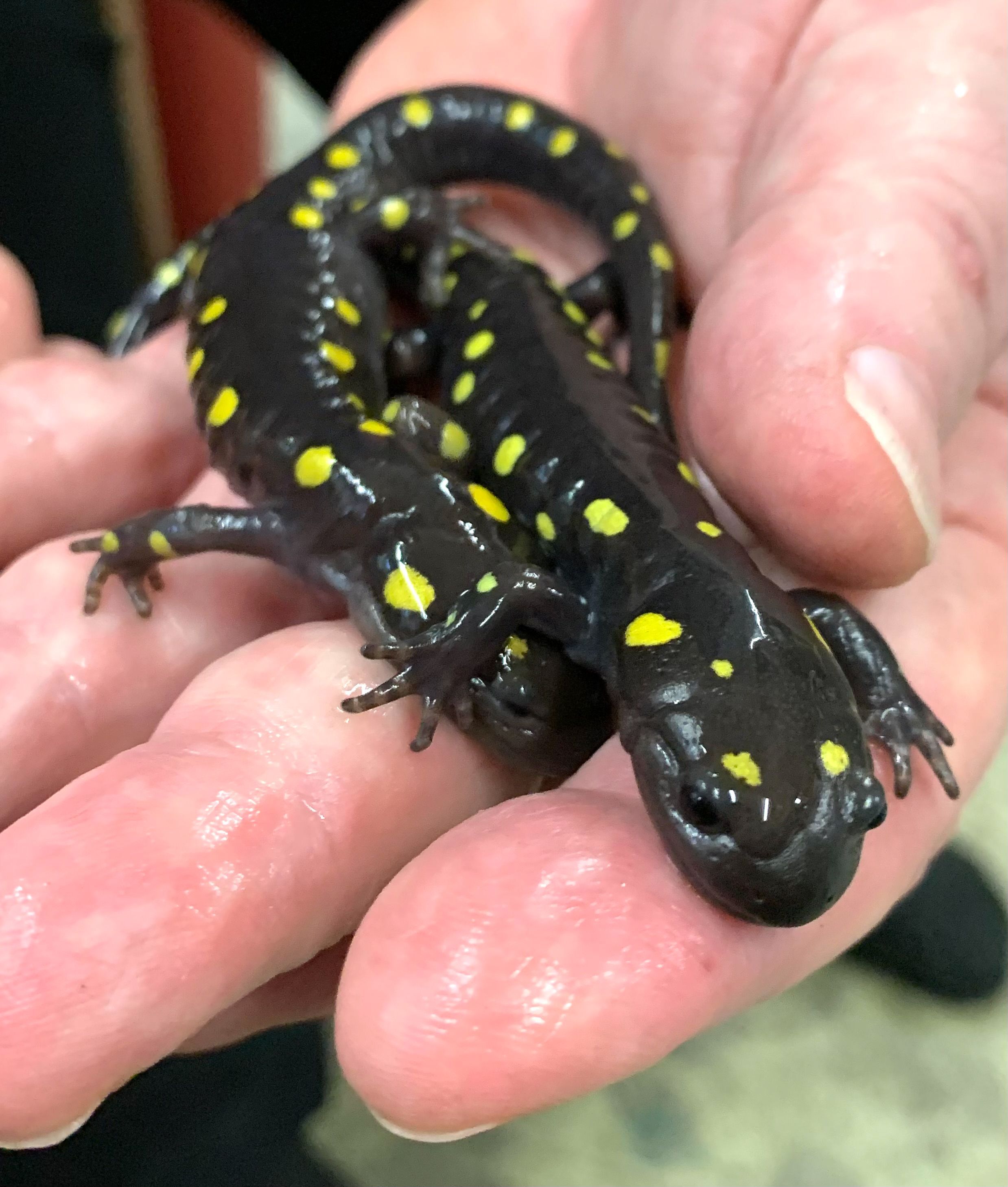
Newborn reptiles and amphibians are on their own from birth with no maternal care. Often turtles are hatched far from water. They don’t need any help. Most of them will make their way to a lake all by themselves. This journey is essential to their development. Whatever their roadmap is and however it works, it is beyond my understanding, but they must be trusted to get there. Bring reptiles and amphibians into care only when they have been injured, or they are out in the winter obviously too cold to move. There're no venomous snakes in Maine.
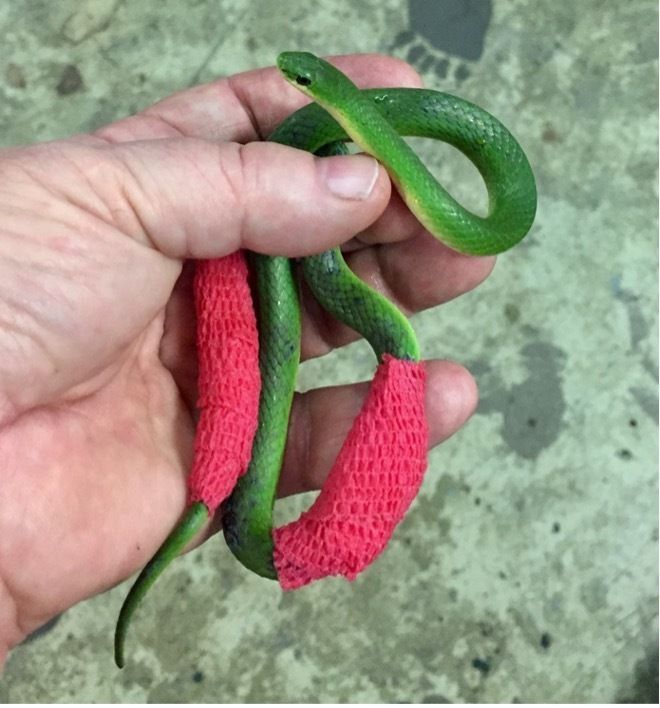
If a turtle has been killed on the road, bring it to us anyway, because we may be able to hatch her eggs and release the youngsters. If an uninjured turtle is in the middle of the road pick it up, if you can stop traffic safely, and put it to the side of the road where it was headed. If it is a Snapping Turtle, maneuver it onto a car floor mat and drag it across. Never grab it by the tail, or by the mid shell, as the first injures the turtle, and the second can injure you. Snappers have a very long neck and can bite. Many of our threatened and endangered species of turtles spend most of their lives out of water. The common Painted and Snapping are out to lay their eggs. Never take them home, never move them to water. They have been on this earth longer than we have and know what they are doing. We have no right to disturb them.

Baby animals where you don't want them?
Sometimes babies are in your home where you don’t want them. Raccoons, bats, squirrels, weasels, and others, find human homes safe places for their young. But most humans would rather they didn’t. Trapping the adult and moving her is a death sentence for both adult and babies. By this decision you have made room for another adult to come in and take over the territory; put an adult animal in a place that she is not familiar with and won’t survive in; and left a litter of babies to die which believe me, you won’t like the smell of.

We rehabilitators are not happy about taking litters of babies when the homeowner has made no effort to find out other options and the babies will not grow up with the benefit of an experienced parent. Instead, call a professional BEFORE you do anything. We have many tricks up our sleeves to convince a mother wild mammal to move her litter out of your house and to another den without damage to anyone. If it doesn’t work, we will then all be happy knowing that we did the best we could to be compassionate, and now will do the best we can to raise the litter. Most mother animals will do just about anything to get their babies back, so reuniting usually works. Then labor for the homeowner begins as all openings into the house must be blocked or animals will just come back the next year. If you have a skunk under your porch, a woodchuck under your garden, or a porcupine under your barn floor, these all require individualized advice so call us BEFORE you do anything, and we will help. Babies with their mothers is always our goal.
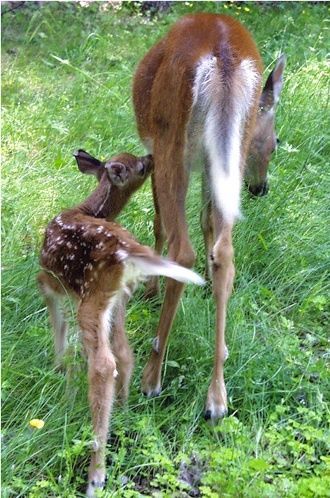
ALWAYS REMEMBER THAT YOUR SAFETY COMES FIRST
A frightened animal will try and bite. A rabies vector species, no matter what the age, can pass rabies to you and must be handled with great caution. And always remember that wild animals are professionals at what they do. They are highly skilled individuals of great beauty. They are not your pets. They do not like you or want to be your friend. But in this one world of ours, where we cause so much damage to wildlife, we owe it to them to help when we can. 85% of all patients in wildlife clinics worldwide have been injured by humans or domestic pets.
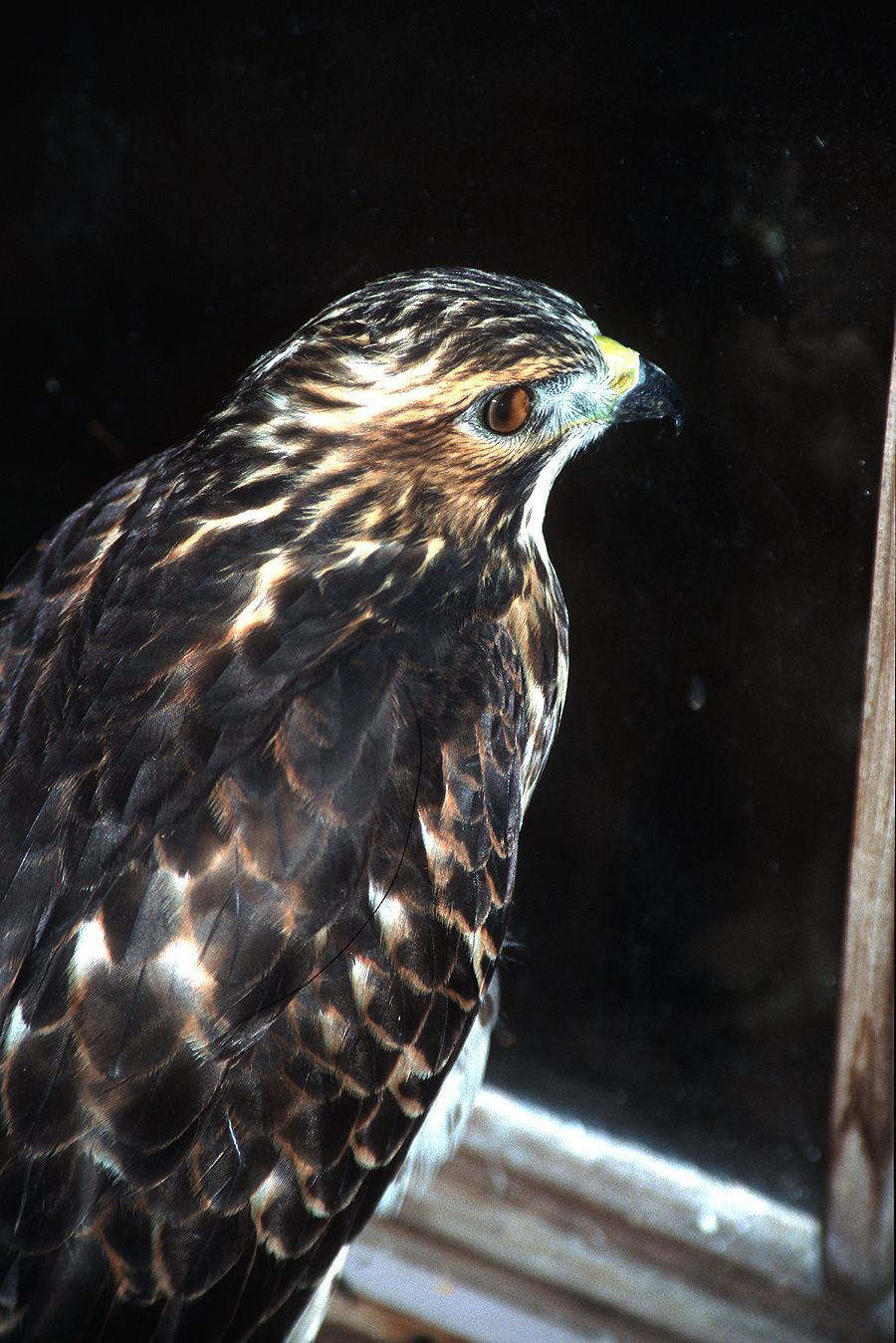
When you have decided that an animal needs your help, wear gloves and place the animal in a cardboard box on a towel, with small air holes, and close the lid. If it is a tiny animal or a baby, provide heat of some sort: a plastic bottle with warm water, covered and away from the animal; a hand warmer; or drive with the box on a heated seat. If it is a big bird or mammal catch it with a net or towel, keep the head covered and the feet (if a raptor) facing away from you. If the mammal or bird is too big or dangerous to handle, call for a warden or wildlife conflict officer to help. Most rehabilitation clinics (ours included) have no spare staff to come and pick up an animal, so you are responsible for getting it to us or finding an alternative means of transport. We will try and help.
